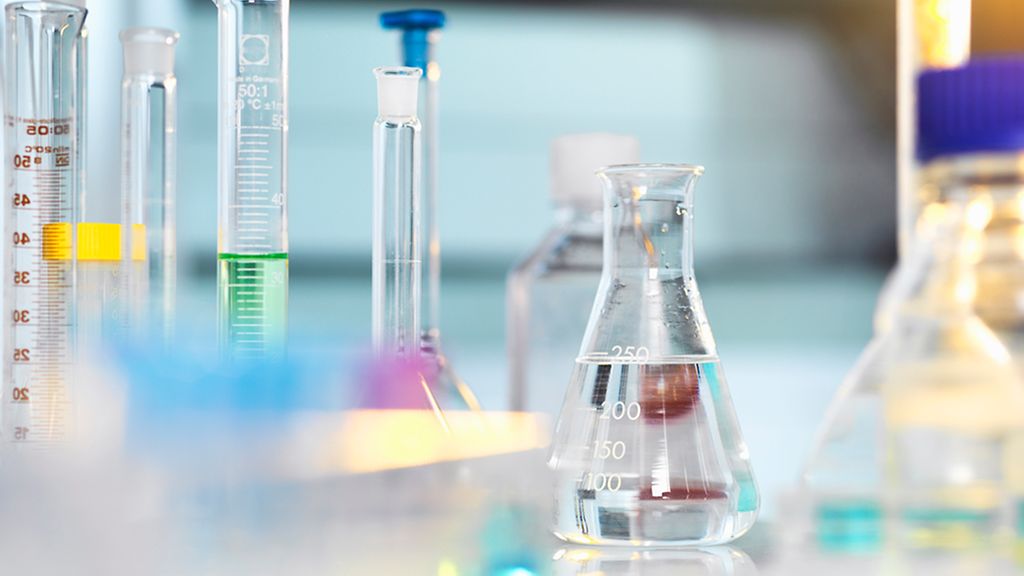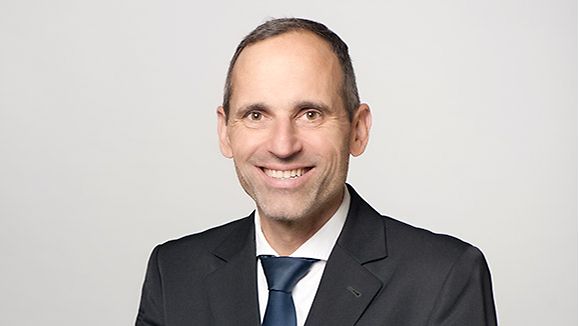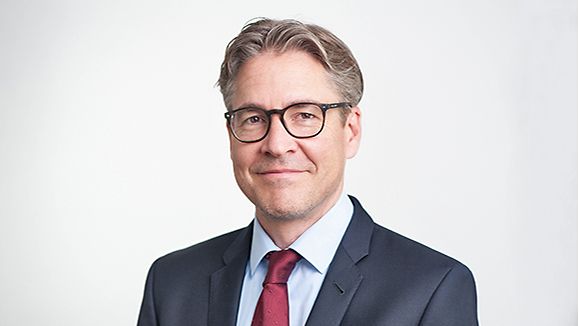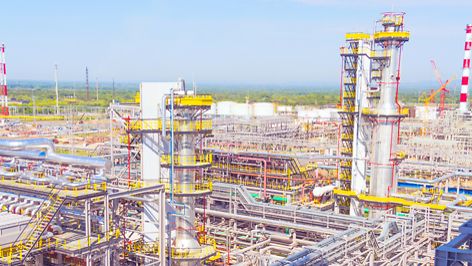Start-up | Company, Location | Chemical | New capacity or expansion (+) in tonnes/year | Investment |
2022 | BASF, Schwarheide | Cathode material for lithium-ion batteries | To equip 400,000 fully electric vehicles | €400m (estimated) |
2022 | UPM, Leuna | Biorefinery based on beech wood for the production of ethylene glycol (BioMEG), propylene glycol (BioPEG) and industrial sugar | 220,000 | €550m |
2021 | BASF, Ludwigshafen | Methanesulfonic acid (Lutropur®) | +65% in Ludwigshafen up to global capacity of 50,000 | double-digit million € amount |
2021 | Ineos, Marl | Cumene | 750,000 | three-digit million € amount |
2021 | BASF, Ludwigshafen | 1,6-Hexandiole (HDO) | +50% in Ludwigshafen up to global capacity of 70,000 | NA |
2021 | Evonik, Marl | Polyamid 12 (VESTAMID®) | +50% | €400m |
2020 | Ciech, Staßfurt | Sodium hydrogen carbonate | 110,000 | €109m |
2020 | Evonik, Rheinfelden | Hydrophobic pyrogenic silica | +20% | double-digit million € amount |
2020 | BASF, Ludwigshafen | Vitamin A | +1,500 (+25%) up to global capacity of 7,500 | NA |
2020 | Celanese, Höchst | Polyoxymethylene (POM) | +20,000 | NA |
2020 | Nouryon, Höchst | Chlormethane | +30% | NA |
2020 | Grace, Worms | Colloidal silica (LUDOX®) | Capacity expansion | €80m |
2020 | BASF, Ludwigshafen | Alkylethanolamine | +20% in Ludwigshafen up to global capacity of 110,000 | NA |
2020 | Clariant, Gendorf | Ethylene oxide | Capacity expansion | NA |
2020 | Covestro, Brunsbüttel | Methyl di-p-phenylene isocyanate (MDI) | +220,000 to 420,000 | €120m |
2020 | DOW, Bitterfeld und Bomlitz | Methylcellulose | +19,000 at the two sites | NA |
2020 | Lanxess, Krefeld-Uerdingen | Benzyl alcohol | +30% | double-digit million € amount |
2019 | BASF, Ludwigshafen | Acetylene | 90,000 | three-digit million € amount |
2019 | CABB, Gersthofen und Hürth | Chloracetic acid | Capacity expansion | double-digit million € amount |
2019 | Alzchem, Trostberg | Nitriles | Capacity expansion | €7.2m |
2019 | Lanxess, Krefeld-Uerdingen | Compounds of polyamide (Durethan®) and polybutylene terephthalate (Pocan®) | Capacity expansion | double-digit million € amount |
2019 | Perstorp, Arnsberg | Pentaerythritol | +12,5% | NA |
2019 | Arlanxeo, Dormagen | Chloroprene rubber | +70,000 | NA |
2018 | BASF, Ludwigshafen | Neopor® (expandable polystyrene (EPS) with graphite particles) | +40,000 at the two sites Ludwigshafen and Ulsan (Korea) | NA |
2018 | Lanxess, Krefeld-Uerdingen | Zinc oxide | Capacity expansion through a 3rd production line | €9m |
2018 | Momentive Performance Materials, Leverkusen | 3-Octanoylthio-1-propyltriethoxysilane (NXT-Silan) | Doubling of capacity | €32m |
2018 | Domo und Total, Leuna | Benzene extraction and further processing | | €60m |
2018 | Evonik, Witten | special copolyester, DYNAPOL® | several thousand | double-digit million amount |
2018 | Sasol, Brunsbüttel | Aluminium hydroxide | +15,000 | NA |
2018 | Evonik, Marl | polyamide 12-powder (VESTOSINT®) | Capacity expansion by 50% | double-digit million amount |
2018 | Evonik, Nouryon | Chlor-alkali electrolysis | 82,000 chlorine and 130,000 potassium hydroxide | NA |
2017 | Leuna-Harze, Leuna | Bisphenol A and Bisphenol F liquid epoxy resins | +30,000 to 70,000 | €45m |
2017 | BASF, Schwarzheide | Ultramid (PA: polyamide) and Ultradur (PBT: polybutylene terephthalate) | +70,000 up to a global capacity of 700,000 | NA |
2017 | CRI Catalyst, Leuna | Catalysts | +3,000 | €30m |
2017 | Bayer CropScience, Hürth | Methane-phosphonic acid butyl ester | NA | €150m |
2015 | BASF, Ludwigshafen | Toluene di-isocyanate (TDI) | 300,000 | €1bn |
2015 | BASF, Ludwigshafen | World-scale plant for specialty amines, primarily dimethylaminopropylamine (DMAPA) and polyetheramines (PEA) | 12,000 | NA |
2015 | Evonik, Marl | But-1-ene | + 75,000 up to global capacity of 310,000 | €100m+ |
2015 | BASF, Ludwigshafen | Complexing agent methylglycinediacetic acid (Trilon M) | Capacity expansion to a global capacity of 170,000 | NA |
2014 | Bayer, Dormagen | Toluene di-isocyanate (TDI) | 300,000 | €150m |
2014 | BASF, Ludwigshafen | Vinylformamide (VFA) | Capacity expansion | €100m+ |
2014 | Evonik, Marl | Liquid hydroxyl terminated polybutadiene (HTBP) | + 10,000 to 22,000 | €50m+ |
2014 | Hi-Bis, Bitterfeld | 1,1-Bis-(4-hydroxyphenyl)-3,3,5-trimethylcyclohexane, Bisphenol-TMC, Raw material for Apec from Bayer MaterialScience | + 5,000 to 10,000 | €50m |
2014 | Mitsubishi Plastics, Wiesbaden | Aluminia composite material (AlpolicTM) | 1,5 Mio. sqm | €17m |
2014 | Air Liquide, Dormagen | Steamreformer to produce crack gas from natural gas | 120,000 CO and 22,000 H2 | €100m |
2013 | AkzoNobel, Höchst | Chlor-alkali electrolysis | + 165,000 to 250,000 chlorine and 275,000 sodium hydroxide | €140m |
2013 | Lanxess, Leverkusen | Cresols | +20% | €35m |
2013 | Covestro, Leverkusen | 1,6-Hexamethylene diisocyanate (HDI) and isophorone diisocyanate (IPDI) | Capacity expansion | €35m |
2013 | BASF, Ludwigshafen | Neopor expandable polystyrene (EPS) | +60,000 to 150,000 | NA |
2013 | Evonik, Marl | Diisononyl cyclohexane-1,2-dicarboxylate | 40,000 | double-digit million € amount |
2013 | Radici, Zeitz | Hexanedioic acid | + 16,000 to 107,000 | €18m |
2013 | LyondellBasell, Wesseling | Butadiene | +40% to 240,000 | NA |
2013 | Lanxess, Dormagen | Ethylene vinyl acetate (EVA) copolymers | +30% to 15,000 | NA |
2013 | DOMO Caproleuna, Leuna | Polyamide 6 | 50,000 | €30m |
2013 | Kuraray, Höchst | Polyvinyl alcohol (PVA) | +24,000 to 94,000 | €58m |
2012 | BASF, Ludwigshafen | Cristallinic salt of Hexanedioic acid and Hexane-1,6-diamine, AH-salt | 24,000 | NA |
2012 | BASF, Ludwigshafen | Polycaprolactame, PA6, Ultramid® B | +21,000 | NA |
2012 | Styron, Schkopau | Styrene butadiene rubber, S-SBR, Sprintan™ | +50,000 to 160,000 | €91m |
2012 | Vinnolit, Burghausen | Paste PVC | +9,000 to 100,000 | €9m |
2012 | Clariant, Hürth | Diethyl phosphinic acid aluminate salts, DEPAL, Exolit® OP | Doubling of capacity | CHF tens of millions |
2012 | BASF, Ludwigshafen | Methane sulfonic acid, Lutropur® | +10,000 to 30,000 | NA |
2012 | Clariant, Straubing | Cellulosic ethanol via biocatalysis | 1,000 tonnes ethanol from 4,500 tonnes straw wheat | €28m |
2012 | Sasol, Brunsbüttel | Triethylaluminium, TEA | 6,000 | NA |
2012 | LEUNA-Harze, Leuna | Chlor-Alkali-Elektrolyse und epichlorhydrin production | 15,000 chlorine | €70m |
2012 | Wacker, Nünchritz | Polycristalline silicium | 15,000 | NA |
2012 | Lanxess, Krefeld-Uerdingen | Formaline (32%) | 150,000 | €18m |
2012 | Dyneon, Gendorf | New production line for fluoropolymers | | 60€m |
2011 | IAB, Bitterfeld | Lewabrane® | | €30m |
2011 | OXEA, Oberhausen | 2,2-Dimethyl-1,3-propanediol | Capacity expansion up to 45,000 | NA |
2011 | BASF, Ludwigshafen | Ecoflex and Ecovio biopolymers | Ecoflex + 14,000 to 74,000 | NA |
2010 | LyondellBasell, Münchmünster | High density polyethylene (HDPE) | 320,000 | NA |
2010 | BASF, Ludwigshafen | Low molecular weight polyisobutene (PIB) | +25,000 to 40,000 | NA |
2010 | Covestro, Leverkusen | Pilot project for carbon nanotubes | 200 | €22m |
2010 | BASF, Ludwigshafen | Syngas | Expansion to around 1.4bn m3 | €100m |
2009 | Evonik, Marl | 2-Propylheptan-1-ol (2-HP) | 60.000 | €100m |





